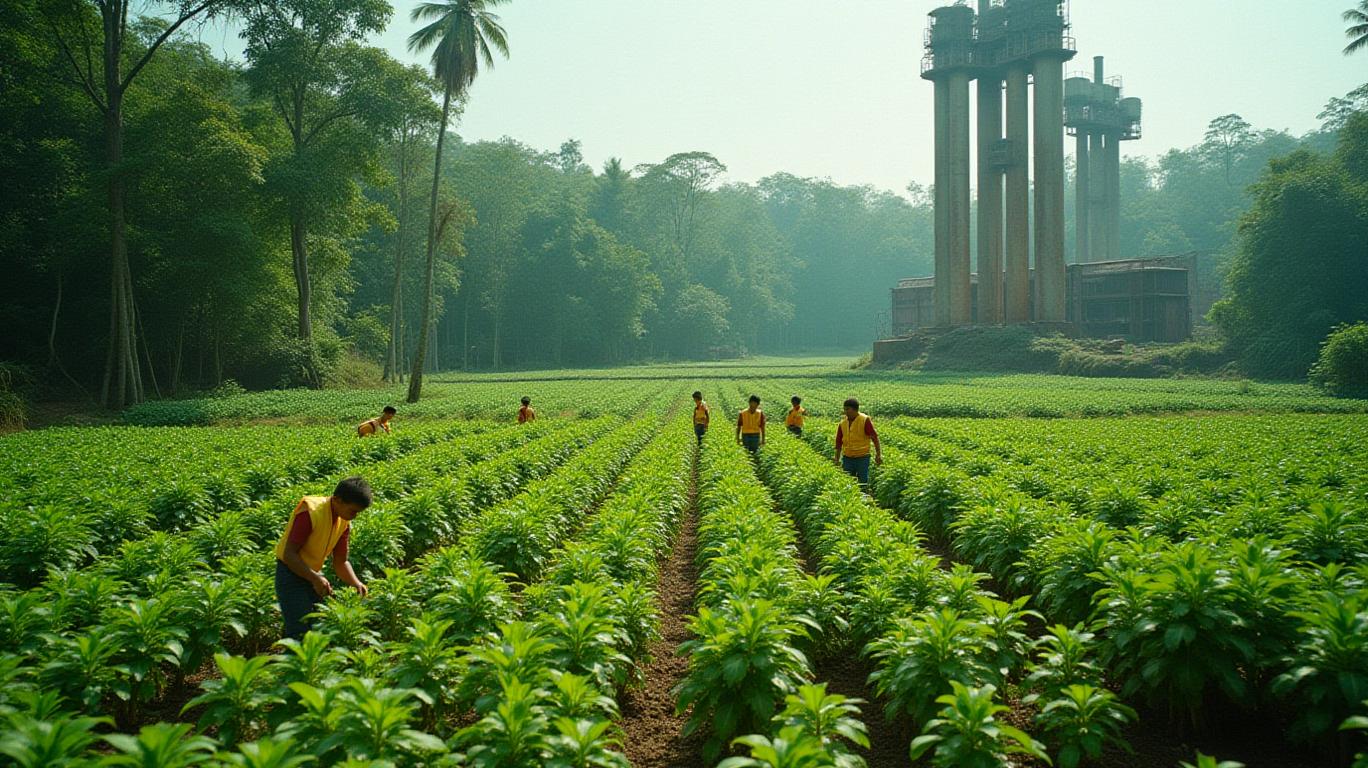Timing the Rubber Rebound: Contrarian Opportunities in a Volatile Commodity Cycle
The Asian Rubber market (SMR20) has entered a critical inflection point, marked by a 15.45% YTD price decline—a stark contrast to its historical volatility and cyclical nature. For contrarian investors, this presents a rare opportunity to position for a rebound, as short-term pain aligns with long-term demand resilience. Let’s dissect the mechanics of this commodity’s cyclical dance and why now is the time to consider strategic entry.
Ask Aime: "Is now the right time to invest in the Asian Rubber market after a 15.45% YTD decline?"

1. The Contrarian’s Edge: A 15.45% YTD Decline Signals Buying Power
Asian Rubber SMR20 prices have plummeted from an estimated 197.5 US cents/kg at the start of 2025 to 167 US cents/kg in April, driven by seasonal oversupply and geopolitical headwinds. This decline, however, masks a structural opportunity.
Ask Aime: Could this oversupply and geopolitical turmoil make Asian Rubber's SMR20 an irresistible buy?
The chart above reveals the panic-driven sell-off, exacerbated by fears of a U.S.-China tariff war and labor shortages in Malaysia. Yet, this pullback creates a low-risk entry point, as prices now hover near multi-year lows. The May 7 forward price of $1.80/kg (180 US cents/kg) for June delivery hints at market stabilization, but the true opportunity lies in the coming months.
2. Q1 Chinese Auto Exports: A Demand Catalyst in Disguise
While headlines focus on near-term oversupply, China’s auto exports surged 16% in Q1 2025, a sector directly tied to rubber demand. Every car requires ~7–10 kg of natural rubber for tires, belts, and hoses. This growth isn’t a blip—it’s part of China’s broader industrial revival, with automakers like BYD and Geely ramping up global shipments.
The data underscores a latent demand tailwind that will materialize once supply pressures ease. Investors ignoring this trend risk missing the rebound.
3. Seasonal Supply Peaks: Q3’s Bottom Sets the Stage for 2025 Recovery
The rubber market is highly seasonal, with supply peaking in Q3 (July–September) due to the Northern Hemisphere harvest. This creates a “double whammy” of oversupply and reduced buying from manufacturers stockpiling ahead of the lean season (November–February).
The chart shows prices typically bottom during this period, offering a high-probability entry window. By Q4, demand from tire manufacturers and auto producers kicks in, driving prices higher. The 2026 price target of $183.42/kg (1,834.2 cents/kg)—a 10% upside from current levels—is achievable if this seasonal pattern holds.
4. The Paradox of Now: Oversupply vs. Industrial Demand Resilience
The near-term pain of Q3’s supply peak is the contrarian’s ally. While traders may panic over the coming price dip, this is precisely when physical buyers and investors should accumulate. The paradox?
- Short-term: Overproduction from Thailand, Indonesia, and Malaysia will keep prices depressed.
- Long-term: Auto demand, ESG-driven tire innovation (e.g., low-rolling-resistance tires), and China’s industrial renaissance ensure rubber remains indispensable.
The $183.42/kg target for 2026 assumes stabilization in trade tensions and a return to historical demand growth. Even a partial recovery to $1.85/kg (185 cents/kg) by year-end would yield +14% returns, excluding leverage.
Action Plan: Time Your Entry for Maximum Reward
- Watch for Q3’s Bottom: Use the SMR20 forward contracts (e.g., September delivery) to identify the price floor. Historically, lows occur in mid-August.
- Average Into Positions: Deploy capital in tranches as prices test support levels (e.g., $1.65–1.70/kg).
- Lock in Gains by Year-End: Set profit targets at $1.85/kg (Q4) and $1.90/kg (2026), using futures or physical contracts.
Final Word: The Rubber Band Theory
Like a rubber band stretched to its limits, SMR20 prices will snap back once oversupply abates. The 15.45% YTD decline has created a spring-loaded scenario for investors who dare to act when fear is highest. Ignore the noise—this is a textbook contrarian setup.
Act now, or risk missing the rebound.
JR Research advises investors to conduct independent analysis and consider risk tolerance before entering commodity markets.


_442a2dcc1749832873286.jpeg)
_e68fac6d1749831664430.jpeg)






